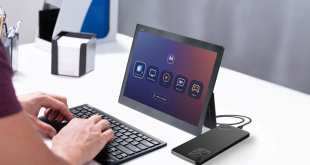2016 saw a host of news from Brexit and virtual reality to exploding smartphones and Pokémon Go, but what stories, events and technologies defined the year in IT and tech? Jonathan Easton gathers the channel together to reflect on the year that was…
The year that we are now leaving was, safe to say, a rather odd one. It was a year that saw a luminous reality tv star become the most powerful man on earth, and a year that saw one of the most influential artists on the planet leave it. Closer to home, 2016 saw lots of exciting movements within the channel with several areas of big growth.
“While artificial intelligence, machine learning, and virtual reality (VR) received most of the attention for 2016, wearable technology gets my vote for biggest trend in 2016,” says Lifesize senior director of product manager Josh Duncan. “Adoption has moved from the early adopter to the mainstream market. Everywhere you look, people now have wearables.”
Connected devices saw a big boom in 2016, perhaps even bigger than the media had expected, as Will Lui, country manager at TP-Link says: “Smart home technology is gaining significant traction as a retail category. This is one instance where we feel the general consumer as ‘got’ the technology far in advance of mainstream press. I would actually go as far as to say the consumer appetite for smart home technology has been totally underestimated.“
The popularity and potential of devices like the Amazon Echo and Google Home would suggest that Lui’s assertion is correct, but the internet of things (IoT) doesn’t just exist for consumers, as Maximity director Tracy Pound points out: “IoT from a business perspective was certainly a big trend this year, while Big Data is becoming more mainstream. Big Data has been talked about for a long time and this year businesses seem to be grasping it a lot more and harnessing the data they have.”
With all this gushing over smart tech, wearables and the IoT, iiyama’s Lewis Clifford says that gaming is still dominating the channel and should not be ignored: “The Gaming market continued to pique the interest of many vendors due to the fast paced and enthusiastic consumer wanting more options.”
“Consumer appetite for smart home technology has been totally underestimated.”
Will Lui, TP-Link
Outside of the realm of connected devices, it could be argued that it was something that has been around for over a decade that saw its biggest year in 2016.
“Bluetooth technology continued its ‘boom’ over the past 12 months, with increasing demand for devices and accessories to become progressively more portable and eliminate the limitations of cables,” says Ben Jones, senior product manager at Hama.
This demand was brought to a head with the new iPhone 7 in September that saw the complete exclusion of a headphone jack.
After murmurings last year, Apple’s decision to remove the 3.5mm headphone jack from the iPhone was no surprise. Neither was the announcement of the redesigned MacBook Pro that comes lacking the traditional USB 2.0 in light of 2015’s port-lite MacBook.
What was something of a surprise was the creative leap taken by Microsoft says Duncan. “Microsoft’s announcement of their new Surface Studio all-in-one computer was extremely well-received by the industry and received worthily praise from the press, usually reserved only for Apple.”
It could certainly be argued that Microsoft’s current strategy harkens back to the heyday of the Cupertino computer company, where Steve Jobs presented Garageband on stage as a transformative tool for users. Showing off the design capabilities of its HoloLens augmented reality (AR) headset and its debut desktop has the potential to spur an otherwise staggering market on agrees Duncan. “Microsoft’s focus on innovative PCs and input devices, like the new Surface Dial, can help drive a renewed interest in this form factor.”
Microsoft also surprised many by entering into the the VR fray, creating headsets with some of its partners including HP, Dell and Asus. These array of devices are come especially as a surprise when considering the proposed extremely low entry price point of $300 for some of the devices.
This is in stark contrast to the other major headsets that saw release in 2016: the £349 Playstation VR, the £549 Oculus Rift and the £759 HTC Vive. The latter of those saw a drastic price increase in the UK thanks to currency valuation changes caused by the fallout of Brexit.
Until this point Brexit has been something of an elephant in the room for this article. It was one of the, if not the biggest story in the UK this year. Its ramifications have sent ripples across all markets and industries – none more so than tech.
The aforementioned Vive saw a £70 increase in cost, the OnePlus 3 was upped in price by £20 and Apple in October increased the prices of its computers across the board, including a £500 increase for a Mac Pro from 2013.
This is, according to Jones “the most immediate, and probably the most significant, effect of Brexit".
“As a result, many manufacturers or distributors importing materials and goods from overseas would have seen a sudden increase in costs, with many forced either to absorb the additional outlay themselves or risk the wrath of their own customers by subsequently increasing their own prices further along the chain.”
As is already apparent from price increases, “the harsh reality of Brexit is that consumers will begin to feel the impact on the pound in their pockets,” says Gekko MD Dan Todaro. “Recent events such as the battle between Tesco and Unilever may be the benchmark for future price struggles between brands and retailers. This still rings true six months on from the vote.”
“The whole process of Brexit has been a complete mess that’s damaged our economy.”
Tracy Pound, Maximity
From the perspective of a vendor, Gigabyte Notebook UK country manager Steve Clark says that the repercussions of the UK’s decision to leave the EU have made life tough and has forced companies to rethink their strategies. “Obviously Brexit and the pound’s weakness, has applied big pressure to all our margins, and will probably continue to do so.”
However, there is a universal belief that, in spite of the the potential headaches presented by Brexit, the channel will be okay. “The market remains resilient,” say Clifford.
“Of course it has presented challenges, but both consumer and channel partner awareness of those challenges seems to have improved significantly.”
It is perhaps the uncertainty surrounding Brexit that has been the most damaging on the channel, claims Pound. “There is a lot of talk and arguments but no decisions. I still don’t know if Brexit is actually going to happen and if Article 50 will be triggered or ratified. The whole process has been a complete mess that’s damaged our economy.”
Brexit was perhaps the largest defining feature of the past year, but the successes in tech and IT should not be overlooked. Exponential growth in wearables, the force of nature that is the IoT and the long-awaited mainstream arrival of virtual reality are all areas that should be looked upon as defining features for the year.
The UK’s departure from the EU has dominated the conversation in 2016, but the the channel goes on.
 PCR Tech and IT retail, distribution and vendor news
PCR Tech and IT retail, distribution and vendor news


